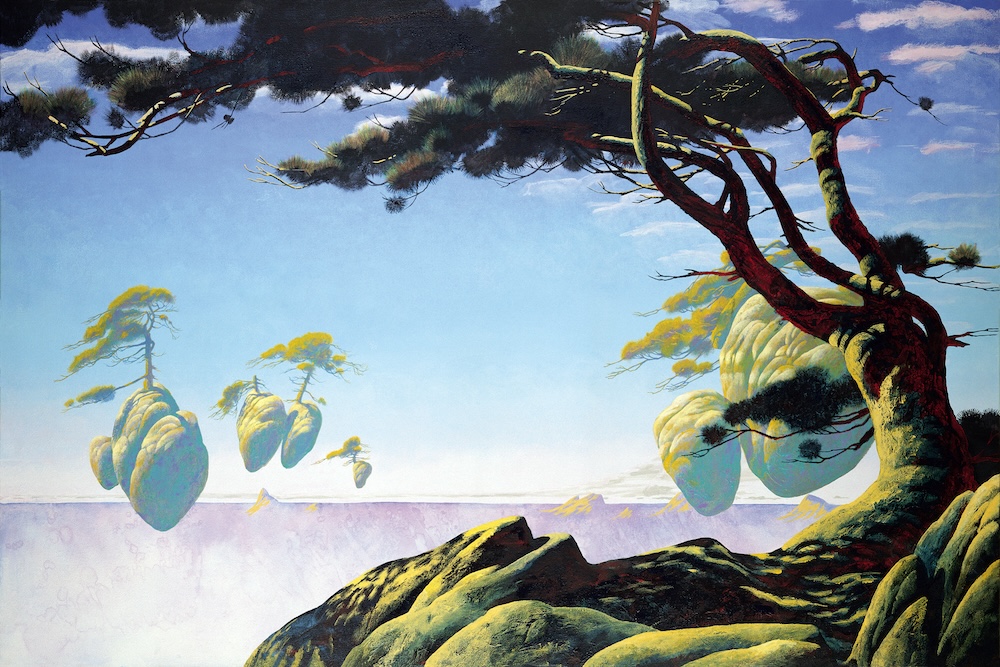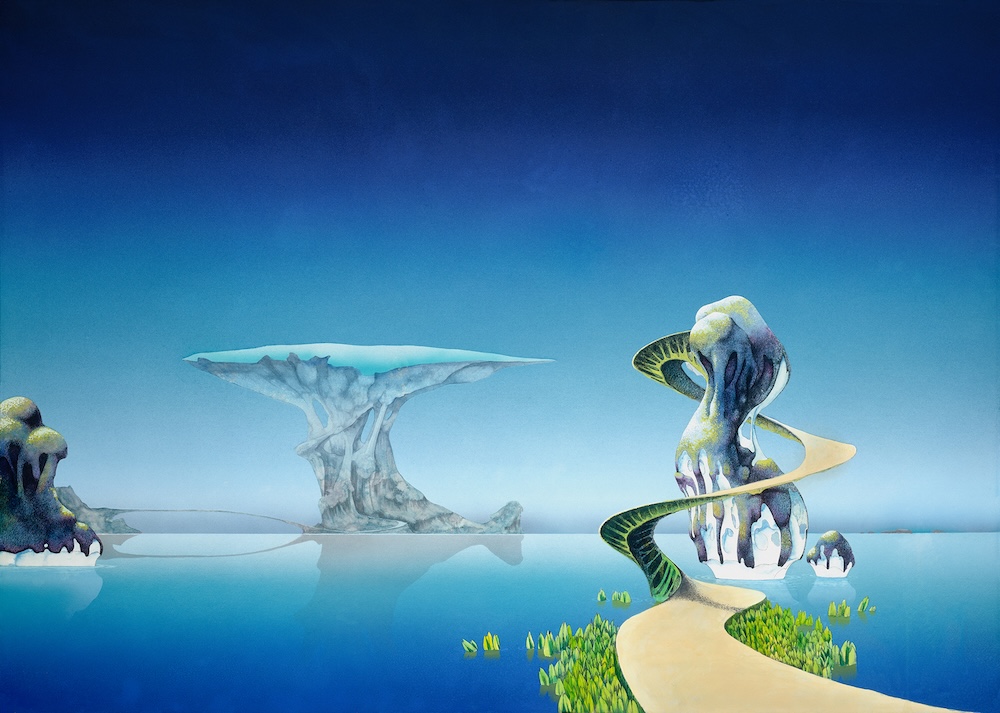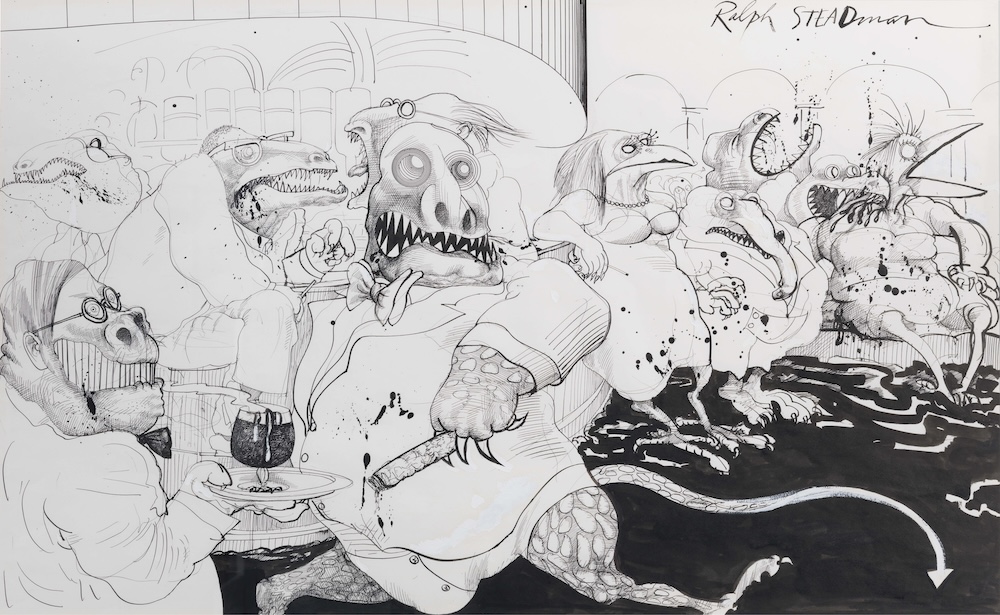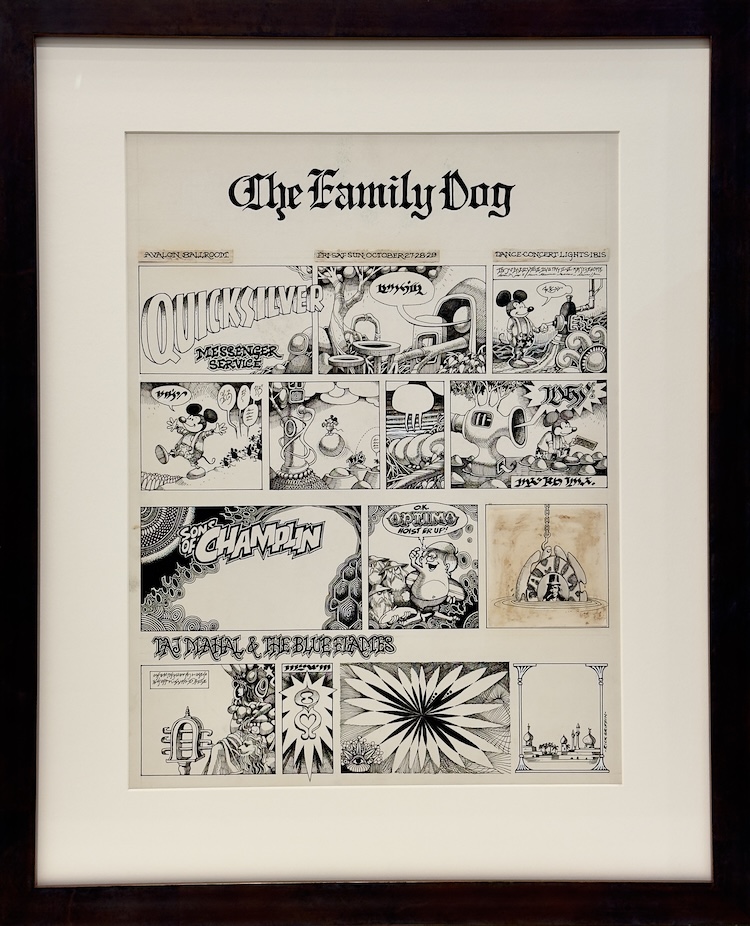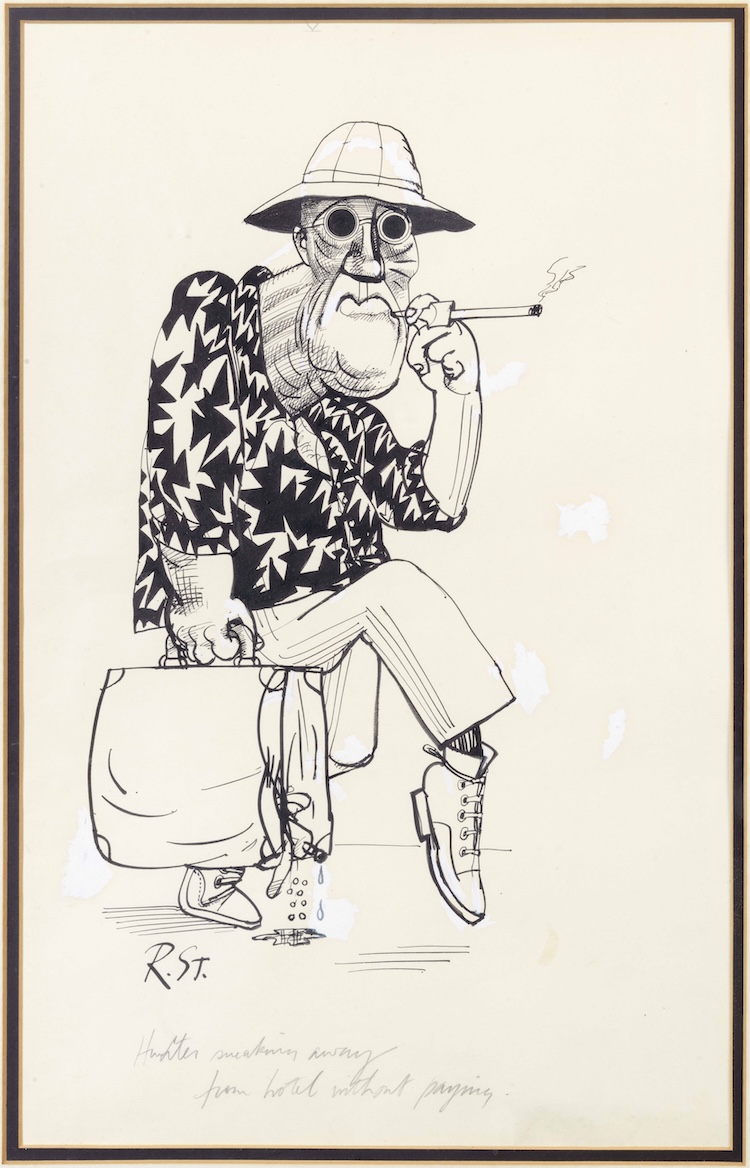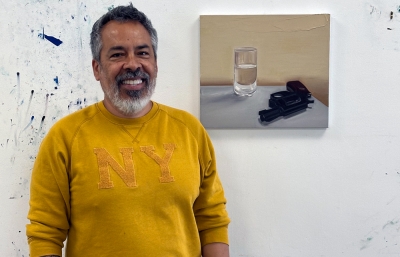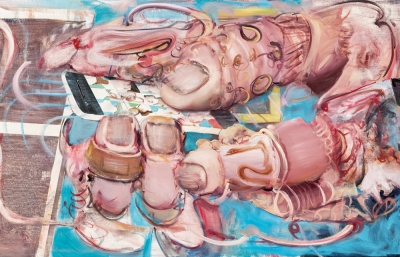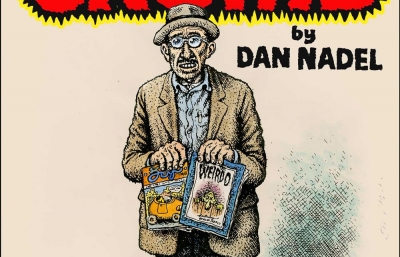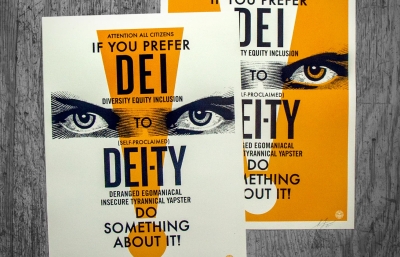Tucked away in the foothills of the Sierra Nevadas, in a town called Grass Valley, Brian Chambers is changing minds. Or, perhaps better stated, he is curating experiences that alter our perception of reality. To call The Chambers Project the leading psychedelic gallery in the world isn’t hyperbolic because, indeed, a gallerist dedicated to Outsider Art and psychedelic culture should exist in the mountains, wide skies beckoning above, reaching out to the expansive universe. As fans of a program that has long showcased and worked with the likes of Ralph Steadman, Roger Dean, the Rick Griffin Estate, Oliver Vernon, and MARS-1, we spoke with Brian preceding Godfathers, a show that is not just about the artists he cares about but also a personal journey in the world of psychedelic discovery.
Evan Pricco: I want to know about the first piece of art you bought. When did you become more than just a fan of the arts and consider presenting artists and then opening an art gallery?
Brian Chambers: When I was a sophomore in high school in 1995, I bought my first piece of art for $1000, which was a ton of money for a 16 year old kid. This was an Albert Hofmann signed 50th Anniversary of Bicycle Day poster celebrating the discovery of LSD. And this is the exact moment I realized I was no longer a collector of baseball cards and comic books; I was now officially an art collector. It was a somewhat terrifying but serene feeling because, at that time in my life, I'd never spent that much on anything. This poster still hangs on my wall today.
What would you say, then, was your first bit of art education? Where did it come from?
This is a great question, and I suppose for me this also happened in 1995, in science class at school. I was on acid, and my teacher, Mrs. Primm, had an Alex Grey poster on the wall, and while I was tripping and staring at it, she told the class that this art was inspired by LSD. I'd just finished reading Fear and Loathing in Las Vegas and discovered the work of Ralph Steadman. This was an "AHA" moment for me and made me realize it wasn't just me and that psychedelic art was a THING! This is when my research into the field of psychedelic art history began and led me to the 1960's poster movement in San Francisco, of which Rick Griffin was the king. I've been diving down this rabbit hole ever since, and it's only gotten deeper and more interesting.
I feel like The Chambers Project came at just the right time, continuing a legacy such as Psychedelic Solution or even some of the great pop surreal and poster art curators and galleries. When did you begin to formulate having your own space, and did being a collector-enthusiast give you a certain idea of how you were going to do it?
Jacaeber Kastor and his gallery, Psychedelic Solution, definitely had a major impact on my early days of collecting and certainly subconsciously played a role in the way I'd get into my own form of curation. Jacaeber always carved his own path and blazed his own trail with an aesthetic that he believed in, and I credit him with shining a light on the psychedelic aesthetic previously unseen at a high level with intention and commitment. I suppose the first time I commissioned MARS-1, Oliver Vernon, and David Choong Lee to paint a live collaboration in 2009 was a defining moment, and it was when I saw very clearly that the rest of my life would be devoted to the arts. Furtherrr was born; everything was very fun and exciting, and I took every opportunity I could to share this collaborative art experience with as many people as possible while trying new things and sharing canvases with different artists. I opened my first gallery in New Orleans a month after this first collaborative project. Mars, Oliver, and Damon Soule painted live at the opening, and while this gallery didn't last long, I got my beak wet and I liked it, and in 2012 things got really interesting. I commissioned MARS-1 and Alex Grey to work on their first painting together, and later that year I curated my first solo gallery show with Damon in San Francisco. At this point, I was fully committed and determined to carve my own path ahead in a style that was fun and exciting for me.
I don’t know how you quantify a breakthrough, but tell me about a quantum leap with The Chambers Project.
There have been many epic projects along the way, but I think the Momentum show in 2014 in Denver was definitely a pinnacle moment in time. This was a group show with Mars, Oliver, and Damon, and by this time we had done many epic Furtherrr collaborations, and things were really scaling up and getting very efficient and cohesive. Another milestone was producing Ralph Steadman's first bronze in 2015 with Dr. Gonzo, which began my working relationship with him. A year later, Mars and Ralph painted together, and this remains the only collaborative painting that Ralph has ever done, which was certainly very special for many obvious reasons.
What did you anticipate would be the impact of your gallery? I assume you had an expectation when you started, but I wanted to know what you hoped would happen.
By the time I opened my gallery, I had a few solid and successful shows under my belt, all of which had been well attended. Obviously, I hoped that sales would forever remain strong, but most importantly, I hoped that the impact would simply be to inspire people to become interested in and involved in psychedelic arts and culture. I think a lot of people believe one must be born into a culture of art or have an education in the arts to make any substantial contribution or to turn it into a lifestyle or career. My hope was to inspire others to think outside the box, follow their hearts, and believe in magic. The gallery is a clubhouse where magicians gather and magic happens, and sharing the art that I love with others while educating them on the history is the impact I was hoping to achieve, and I feel it is working.
What challenges did you foresee in opening a gallery? And what challenge occurred that you never thought of?
There are many challenges that come with running a gallery, but one that has been difficult to navigate is Instagram and other social media. These platforms have made it so easy to connect directly with the artists, but they have definitely made it more difficult to survive as a gallerist. Other challenges are balancing the frequency and efficiency of shows, and inflation has added to the difficulties of getting this right. Over the years, I've learned and adopted the quality over quantity approach and have settled on quarterly shows being the sweet spot where turnaround time doesn't have a negative impact on a high level of production and intention.
What kind of collector acquires the art you show at the gallery? Give me a good analysis!
There is such a range of collectors in my program and aesthetic, but one thing that tends to be consistent is an overarching theme or interest in counterculture and psychedelics. In the beginning, there were many collectors with a background in crypto and cannabis money, but over time, this has shifted. These days, especially as the public's perception of psychedelics as medicine shifts, I'm seeing more and more academics and celebrity types becoming interested in and aware of the aesthetic that I represent. As psychedelics become more socially accepted and medically applied, I'm seeing a shift in the acceptance of this art into the blue chip arena, which is very exciting and something I've anticipated for quite some time. It is a very exciting time in psychedelic art history, and the collectors are now coming from many different walks of life, which is very encouraging.
From MARS-1, to Rick Griffin, Ralph Steadman, and Roger Dean, these are the types of artists that I associate with you. So, what is the show opening this spring, and how is it the perfect summary of Brian Chambers as a gallerist?
My next exhibition is titled Godfathers, and it will open on March 9, 2024. This show will also feature works from my mentor, Jacaeber Kastor, of Psychedelic Solution fame. My intention for this show is to weave together a narrative that shows where my taste in aesthetics and curation comes from. It will be a mindblowing display of all of their most iconic works together under one roof. Each and every piece has a major story to tell about the world at large and how these globally recognized images have had a vast impact on counterculture and art history, as well as being woven in with my personal story. Each of these artists is the “Godfather” of my foundation, and each of these artists is a maverick in their respective fields of focus and creation. I am of the opinion that all of these artists carved their own path and marched to the beat of their own drum, something that I value on a very deep level. This is definitely a very exciting type of legacy show that I am honored and excited to share with everyone.
What is your dream show? I'll give you five artists, living or dead.
This is a tough question, but honestly, I feel blessed to say I have been able to work with most of the artists of my dreams. I've always thought it would be amazing to show MARS-1 with Roberto Matta and Salvador Dalí, as I've seen parallels between their work that I'd like to explore. I'd also love to explore an Optical Art focused show with Bridget Riley, Victor Vasarely, Mars, Oliver Vernon, Damon Soule, Colin Prahl, and other contemporaries who have been inspired by this movement and applied their chops to it. I've always loved doing a Furtherrr show and feel I always will, and that is worth doing every few years for sure. The Godfathers show is definitely a dream, and it's one I've been dreaming of for a very long time. I can't wait to see this one come together.
Godfathers opens at The Chambers Project on March 9, 2024 in Grass Valley, California. This interview was originally published in our SPRING 2024 Quarterly.


